Turn Up the Volume: RockShox Suspension Tuning Clinic
When it comes to mountain bike suspension tuning, there's a wide range in levels of interest and technical know-how. On one side you have the 'set it and forget it' crowd, riders who don't typically do much to their fork or shock after getting the initial settings dialed in, and then on the other side are the tech-geeks, those who could wax poetic for hours about shim stacks and suspension curves, and who leap at any opportunity to point out the difference between 'damping' and 'dampening'.
Neither side is better than the other, and even at the highest level of the sport you're just as likely to find racers who rarely touch their suspension settings as you are those who make minute tweaks almost every single run. It was with those facts in mind that RockShox decided to hold a tuning camp in Squamish and Whistler, BC, in order to demonstrate the steps for getting the most out of their Pike fork and Monarch DebonAir rear shock, two of the most common high end suspension elements currently on the market.
Why Squamish? Well, in addition to being surrounded by some of the best riding in the world, it's home to Shawn 'The Wizard' Cruikshanks. His shop, Fluid Function, is located in small industrial park at the edge of town, and serves as a Canadian service center for SRAM products. Shawn is also the suspension guru entrusted with tuning the bikes of several SRAM sponsored athletes, including Brandon Semenuk. In short, if you need someone on hand to help get things dialed in, he's the guy to do it.
The purpose of the clinic wasn't to venture fully down the rabbit hole of suspension tuning, but to focus on the bigger picture, on the type of adjustments that are slightly more involved than turning a knob or flipping a lever, but still easily doable by anyone who can tell their left from right and turn a wrench. Adjusting the air chamber volume on either the Pike or Monarch DebonAir is a relatively simple procedure, but it can have a large influence on the way the suspension performs. In order to suss out the difference that altering the spacer configuration makes, we used the lift-served playground of Whistler Bike Park as our testing facility, repeating the same lap over and over again and changing settings between each run.
The purpose of the clinic wasn't to venture fully down the rabbit hole of suspension tuning, but to focus on the bigger picture, on the type of adjustments that are slightly more involved than turning a knob or flipping a lever, but still easily doable by anyone who can tell their left from right and turn a wrench. Adjusting the air chamber volume on either the Pike or Monarch DebonAir is a relatively simple procedure, but it can have a large influence on the way the suspension performs. In order to suss out the difference that altering the spacer configuration makes, we used the lift-served playground of Whistler Bike Park as our testing facility, repeating the same lap over and over again and changing settings between each run.
Volume Spacer Basics
If you've purchased a bike equipped with a RockShox suspension fork recently, more than likely it came a couple red plastic spacers, which RockShox calls Bottomless Tokens. Although they might look like pieces for a game of checkers, the tokens thread into the underside of the top cap, as well as to each other, and allow for the amount of ramp up the fork has at the end of its stroke to be adjusted. Look at the illustration above, and you can see the difference in air pressure in a fork without tokens versus one with two installed.
Suspension setup isn't an exact science, but rather one that's based partially on how a fork or shock feels on the trail. That's why taking back to back laps on the same track is the best way to compare different settings. The lap used for this session in the Whistler Bike Park was Angry Pirate → Del Boca Vista → A-Line, a run that includes a mix of twisty singletrack with a few rocky sections, and finishes with the high speed jumps that A-Line is famous for.
Pike Bracket Testing
For my first lap, the fork (a 160mm Pike) was set the same way that I would usually run it on my home trails in order to set a baseline, something to compare the following runs against. Once the first of many runs down the mountain was complete, the one token that I normally have installed was removed in order to illustrate what one end of the range of settings felt like. The number of tokens a fork can accept varies depending on the amount of travel as well as the wheel size, but typically the less travel, the more tokens, because the ramp up needs to occur more quickly on a 80 or 100mm fork than it would on something with 150 or 160mm of travel.
Without any tokens installed, the fork felt more prone to diving, and it tended to get sucked into holes rather than staying in the middle portion of its travel. At slower speeds things felt relatively normal, but on bigger hits on rougher terrain it was clear that more progression at the end of the stroke would be helpful. After establishing what a token-free configuration felt like, it was time to install as many tokens as possible, in this case a total of four.
Without any tokens installed, the fork felt more prone to diving, and it tended to get sucked into holes rather than staying in the middle portion of its travel. At slower speeds things felt relatively normal, but on bigger hits on rougher terrain it was clear that more progression at the end of the stroke would be helpful. After establishing what a token-free configuration felt like, it was time to install as many tokens as possible, in this case a total of four.
Monarch Plus DebonAir Bracket Testing
With the fork dialed in, it was time to start working on the rear shock, a Monarch Plus DebonAir. Once the air is removed from the shock, removing the rubber o-ring at the base of the outer air sleeve allows the sleeve to be slid off, and for the rubber band volume spacers to be added or removed. Unlike the fork, where one token makes a noticeable difference, it usually takes two or three rubber bands to make a difference in the shock's feel, as the above graphic illustrates.
Just like with the fork, after taking a run to set a baseline, it was time to install the maximum number of spacers, in this case a total of six. This caused the shock to feel like it was bouncing off obstacles, and it felt too firm in the rougher portions of the trail. On the smoother, jump filled section of the run the extra support was a benefit, providing a platform to push against and really pop off the lip of a jump.
Dropping down to three spacers in the shock ended up being the magic number, a setup that allowed the shock to track and grip well over roots and rocks, but with enough ramp up to keep from blowing through its travel. Of course, the number of bands required will depend on the bike's suspension design in addition to rider preference, since some designs are already inherently progressive and won't need as much progressiveness as a a bike with a more linear spring rate.
Just like with the fork, after taking a run to set a baseline, it was time to install the maximum number of spacers, in this case a total of six. This caused the shock to feel like it was bouncing off obstacles, and it felt too firm in the rougher portions of the trail. On the smoother, jump filled section of the run the extra support was a benefit, providing a platform to push against and really pop off the lip of a jump.
Dropping down to three spacers in the shock ended up being the magic number, a setup that allowed the shock to track and grip well over roots and rocks, but with enough ramp up to keep from blowing through its travel. Of course, the number of bands required will depend on the bike's suspension design in addition to rider preference, since some designs are already inherently progressive and won't need as much progressiveness as a a bike with a more linear spring rate.
What was the end result of all of this fiddling about with plastic tokens and rubber bands? Well, in addition to getting to ride the incredible trails in Squamish and Whistler, it provided a chance to experience the extremes when it comes to suspension setup. Even if it's unlikely that I'll ever use those settings, it's good to know what a fork with four tokens, or a shock with six spacers feels like out on the trail.
For riders that are interested in going a little bit further with their suspension setup, experimenting with different air chamber volumes is the logical next step, and it's easy enough that it can be performed trailside with minimal hassle other than toting along a few tools you wouldn't typically bring on a ride. Taking that extra bit of time to dial in a set up is well worth it, and can lead to an even more enjoyable time out on the trail.
MENTIONS: @SramMedia / @Amarc
Author Info:
Must Read This Week
Sign Up for the Pinkbike Newsletter - All the Biggest, Most Interesting Stories in your Inbox
PB Newsletter Signup
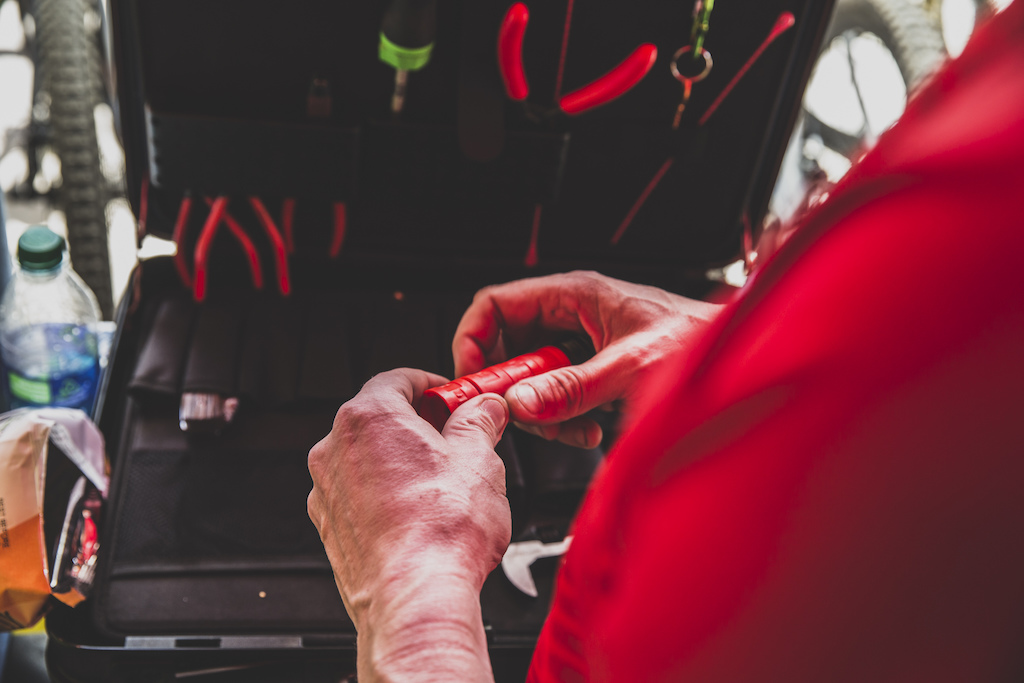


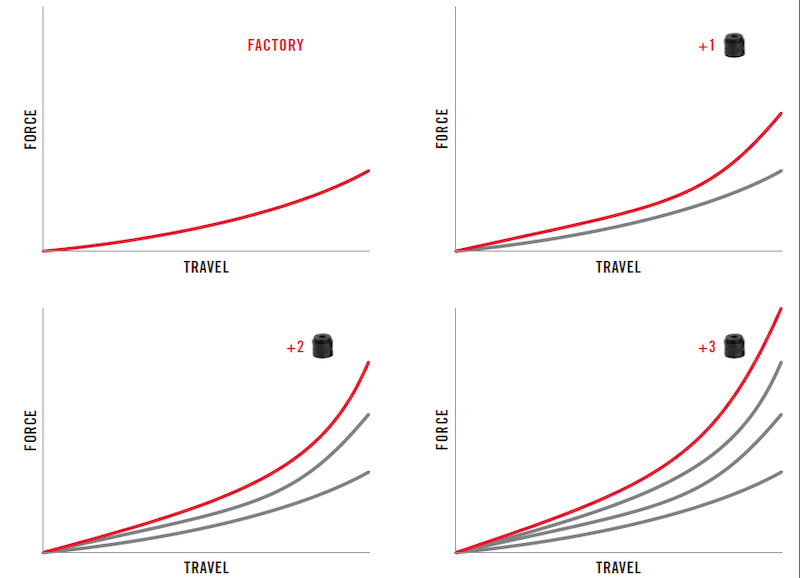

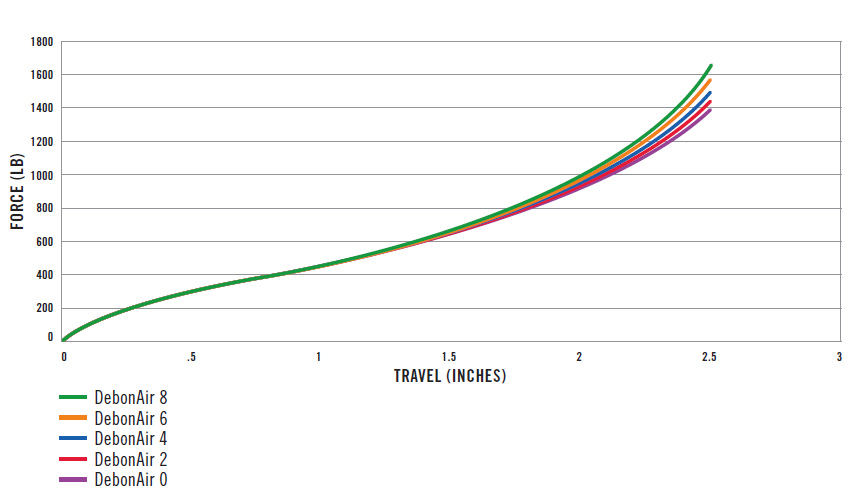
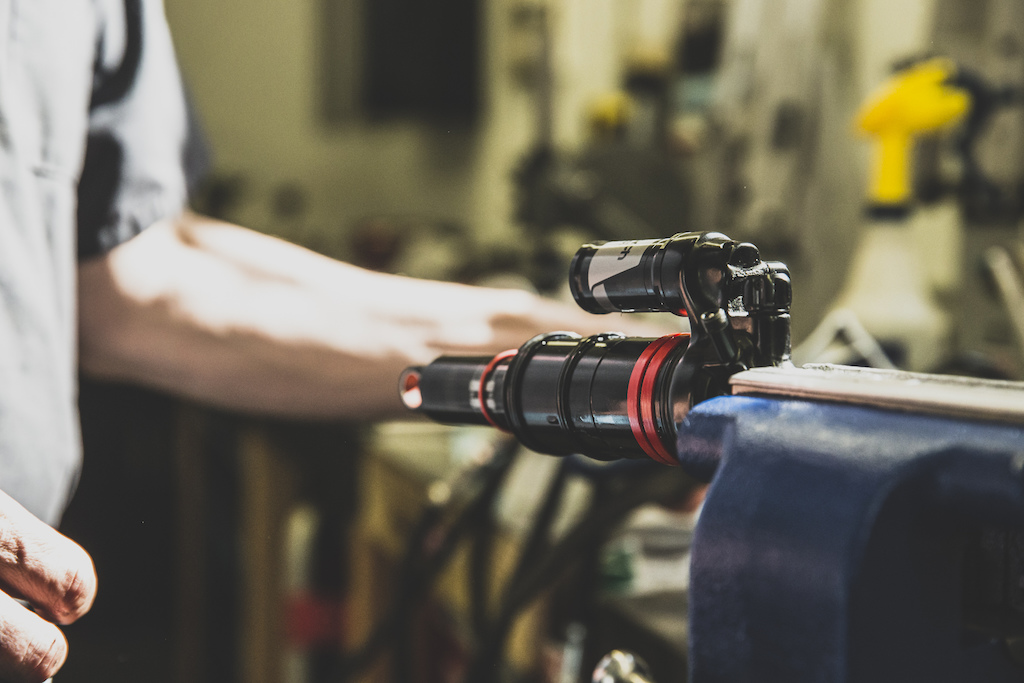
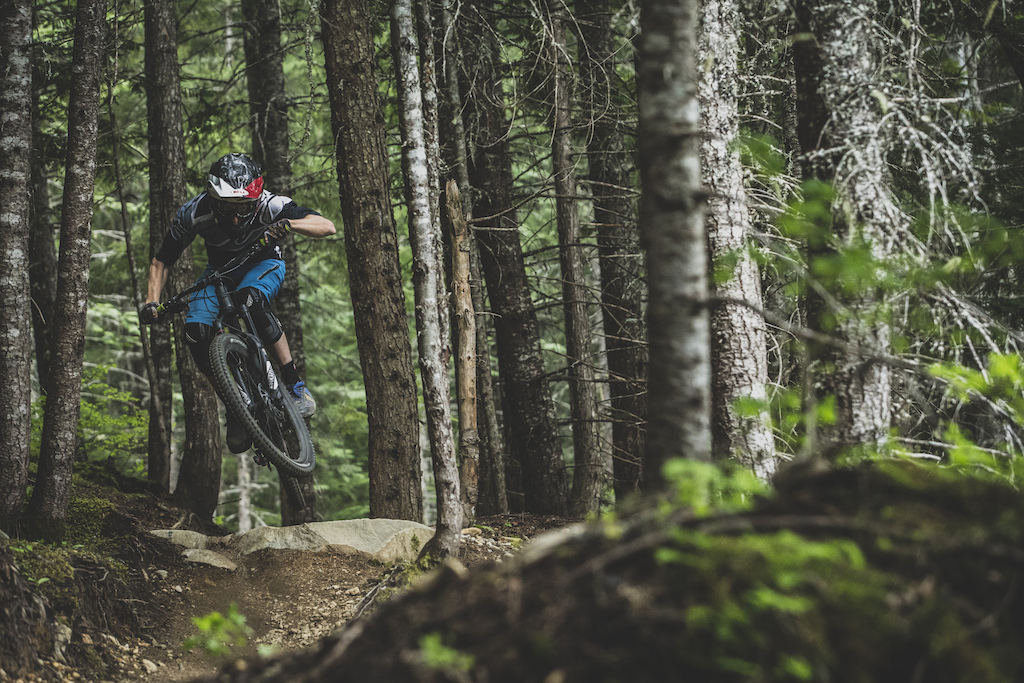

Good luck!
As for the tire, at 40psi your shouldn't be hitting rim in a G-out. And if you are, how are you not constantly rolling the tire off the rim in a turn? I will say, I'm not a fan of the control casing tires (especially as a rear). I run a butcher grid up front and slaughter (sometimes butcher) grid rear. The grid casing makes a HUGE difference in both longevity and sidewall strength.
Would you say your rider weight (gear, pack, everything) is less than 220lb? I hope I don't sound condescending at all, just want to try and help you have fun on his bike enjoy it!
What threw me with that response was more the "kicked me over the bars" statement. I'm having a hard time coming up with how a ___-to-flat landing would ever do that, unless landing super rear-heavy, which would cause most shocks to bottom out...hard. Or, maybe he has nuclear powered rebound.
The drop was into a berm, and there was some downhill slope to the landing; I kind of hit the knuckle, except thats where you have to land to make the turn. Its really not that big a deal, but I bounced off the bottom of the shock and burped the air out of both tires, sending me into the bushes. With those cheap specialized tires/rims they burp nearly time I ride. I'm going back to tubes with them.
Good luck!
These "tuning tips" leave so many questions unanswered. Like, what can I do when I never reach full travel with correct sag and hitting it really hard...? Can I make the airchamber bigger??
If you're not getting full travel with the correct sag and you're hitting stuff as hard as you ever will, you need to lower your HSC. You could also remove any volume spacers you have, but that will change the actual feeling of your fork/shock and you'll need to find the new sag point.
Also it would've been cool to see more pics and info concerning the disassembly steps and tools required. Anyways I'm definitely gonna play around with tokens in my Pike to see whats what.
The De-boner air can does give you more air spring volume, but it also gives you more negative air volume which is what helps make the shock more supple in the first part of the stroke than a standard air can. You may not need to put any volume reducers with certain frames, but it is easily done if necessary.
'Plus' is not an air volume upgrade. The piggy back on the Plus allows the shock to use more oil than the standard shock which helps to stop the oil from overheating as quickly as some of it is housed outside of the shock stanchion, where all the heat is generated through friction.
@wicol, you are correct. It changes the consistency of the fluid when it is overheated. Just like hydraulic brakes, when the fluid reaches its boiling point, the tiny air bubbles expand into large air bubbles. Also, when a fluid reaches its boiling point and cools back down, it now has broken down some of the fluid, and will reach its boiling point even easier the next time... and the cycle continues.
I ride a hard to tune bike - '14 Nomad. The differences I get from adjusting tire pressure, rear shock pressure and fork pressure, not to mention compression and rebound, are huge and driving me nuts. I'm now at a "doesn't suck" set up - and I want to get to awesome. Can you guys give us a program to follow to dial in all these adjustments?
I run my xfusion vengeance at 68psi (barely 20% sag, 78kg full gear) with 6 clicks low speed and 7 high speed.
Used to have rp23 on the rear, ran that 160 psi at 25% sag, but put a length of inner tube inside the can to act the same as a volume spacer. Now run a rock shox kage rc coil shock with 500lbs spring and 2 clicks compression..
Take as you will friend!
My friend has a 13 slayer with a Lyric front end, which is just dialed. Rocky descents are just absorbed softly - while I feel like I've got more "bounce" (fast rebound?) than squish.
Thoughts on adjustments?
nsmb.com/rock-shox-tuning-camp/#comment-2081406018
for now my fork is runing with one token and 75 psi (i'm 73kg equiped) but i was thinking of put another one to make it more progressive,
i also run a monarch plus debonair, and i find myself mostly riding it on the trail position, only to ride fully open when there is low grip or is seriosly rough, like the back up mode for when thing's get real ahah, is it bad for the shock riding pretty much everything on trail? i am an agressive rider, and even for racing i rarely put it on open as i like how it feels
after doing a lower leg service i have huge trouble setting it up like before. need to use 90 psi now instead of 60 before, and thus small bump sensitivity is gone..
I don't see any reason the monarch is any different from the monarch plus/debonair.
I'm 100kg equiped (220lbs)
wazupwifdat?
So how easy a job is this on the Vivid Air, anyone? I could do with a little ramp-up in mine for sure. Seems like a pin wrench and a proprietary Vivid Air wrench are required, plus I kind of knackered an old Monarch RT3 when I did an air can service once and that was a much simpler procedure (step 4 of the air can removal has me worried, messing with the IFP). I'll probably just deal with it this year and send it away for a real service & tune over winter.
And where do we buy the red shock spacers anyway? I don't think this has been mentioned.
Only tool needed is a BB tool.
1: Remove all air pressure from the shock, pull the shock whilst doing this to make sure pressure is removed from negative chamber too.
2: Remove main Air valve.
3: Put the rebound end in a vice, and undo the main air can sealhead with the BB tool.
4: Slide the sealhead up, and be careful to keep hold of the inner alignment ring (metal ring that holds the inner aircan sleeve straight.)
5: Gently tease the inner aircan toward the sealhead,
6: push in the volume spacers onto the inner aircan, past the seal. (Pg21 in the linkabove)
7: Push the inner aircan back into the main aircan fully.
8: make sure the alignment ring is straight, and tighten the sealhead back up with the BB tool.
9: Put the main air valve back in, and pressure up. (cycling the shock a few times to even up the negative chamber)
Voila.
Volume tuned.
P1 = Pressure shock main chamber to 20psi only.
P2 = Fully compress the shock fully with the pump attached, and note the final pressure. (40psi)
Pc = Presure change = P2/P1 = 2 in my example.
Volume change = 1/Pc = 1/2 in this example.
Compressed volume = 1/2 original volume in the above.
Do this again once your volume reducers are in and it will give you a numerical value for the amount of volume ramp up.
Example after: p1=20, p2 =60, pc=3 so volume change is 1/3 or original.
Due to the inverse relationship between pressure and volume, so small volume change = big pressure change.
Good luck!
Good luck!